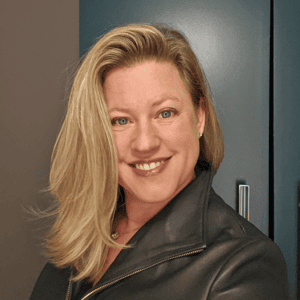 For my final column, I wanted to share a summary version of my talk at the Opening Plenary of our annual conference in Denver.
For my final column, I wanted to share a summary version of my talk at the Opening Plenary of our annual conference in Denver.
I’ve always been the kind of person who loves inflection points. That in-between space where the future is coming into focus, but the rules are all kind of in flux, is so ripe with possibility. That interstitial space is where discovery happens and where those with courage and insight have outsized power to change the world.
This Fourth Industrial Revolution is colliding with a transition well underway in business to realize competitive advantage based on a data science approach to work and workers. These two inflection points together create a sort of once-in-a-century opportunity for industrial-organizational psychology. We’ve got access to more data than ever. We’ve got the computational power to handle enormous quantities of data. We’ve got the analytical sophistication to extract subtle patterns from data. We’ve got recognition that the organizations that can make the best use of their people will beat those that can’t. And we’ve got a ton of space to explore and innovate.
The bedrock principles of industrial-organizational psychology set us up well to help lead organizations in this period of transition. For a century, we’ve balanced efficiency, effectiveness, and ethics to build sustainable outcomes that serve both organizations and the people who comprise them. Moreover, our decades of expertise in how to manage transitions well can be the difference between success and failure in chaotic times.
I often hear people concerned about how to keep these technologies at bay so that our existing assessments and practices can continue to perform. Candidates using AI in selection definitely make it harder to figure out what the person is actually capable of versus what they’ve got access to through an AI assistant of some sort.
If the work is improved with the use of these systems and tools, then our assessment approaches should evaluate the ability to get the job done. Good selection and assessment are always rooted in good job analysis. The methods we use to analyze jobs will evolve, too. Passive and automated data streams can give us rivers of data about how work is performed and what contributes to the most successful performance.
In my 30ish years in practice, I’ve seen over and over how leaders overuse org design levers and create significant disruptions, often for very little gain. Now, we have the data and the analytical power to approach organization design both diagnostically and prescriptively. We can help organizations launch teams and shift designs to match new strategies with much better precision. We can examine skill profiles and a host of other attributes to really build the best possible organizations.
I’ve always been a little distressed that I-O psychology typically doesn’t pay much attention to business processes. So often, our focus in I-O psychology is at the level of an individual or team, but work often flows across many teams. Tools like organization network analysis are giving us better diagnostic ability to see connections among teams, so we no longer have an excuse to think narrowly. If we, as I-Os, only address changes within the confines of individual jobs, we will gravely underserve both organizations and individuals.
That’s not to say we shouldn’t consider the ways in which individual jobs will change over the next decade. We’ve already seen these changes, and there’s every indication that they will accelerate. Creative roles are shifting to focus much more on the beginning and end of a creative process and leave the actual generation to automated tools. Expert roles that rely on vast knowledge, like legal roles, are finding demand shifting to consultation and strategizing rather than document preparation. Operational roles are starting to shift from processing transactions to tending to a bank of automated agents, requiring more sophisticated skills in things like defect detection and mitigation. Even roles that remain fundamentally human are likely to be enhanced by judicious use of technology. Healthcare providers have been using surgical robotics and AI-assisted diagnostics for years now; this will only accelerate and expand to more and more domains.
A lot of the job and business process design decisions are going to be made outside of HR. Although many of us have been connecting our work to business outcomes for a long time, the willingness and ability to do so helps support our influence as key strategic partners. We can improve our impact by focusing on measures that would be recognized by partners in operations and finance or whatever the core business for that organization happens to be.
The next decade promises enormous change—for society as a whole, for the world of work, and for SIOP as a community and as an organization. But our opportunities remain immense—even transformative. The opportunity to not only live through but guide the direction and outcomes of the Fourth Industrial Revolution is tremendous, and we shouldn’t squander it. If we play small, if we simply keep doing what we have always done, we will lose the opportunity to build a better world of work.

